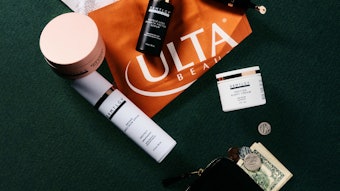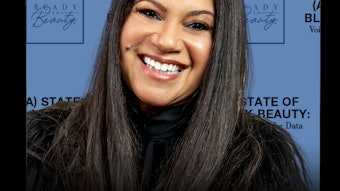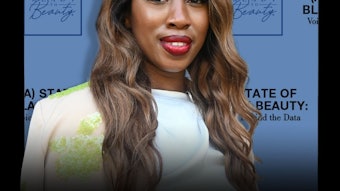- In-store merchandising continues to be a primary driver of sales across retail channels.
- Beauty brands must work closely with retail display designers to create effective platforms for their products.
- The best retail displays engage customers and appeal to their senses.
The fast pace of technological innovation has, in many ways, altered the landscape of marketing. Consumers can now search for, purchase and review products all from the comfort of their homes using laptops, tablets, smartphones and a host of other digital devices. This has caused merchants and retailers in every industry—beauty included—to focus more heavily on e-commerce and the integration of various online platforms.
But contrary to what many brand owners believe, consumer behavior research continually demonstrates the most effective way to generate brand visibility, introduce a new product and encourage sales is by focusing on the tried-and-true method of in-store marketing. According to a 2012 Shopper Engagement study conducted by Point of Purchase Advertising International (POPAI), 76% of purchasing decisions are made directly in the store. Moreover, the importance of point-of-sale appears to be rising, as this number represents a 6% increase since 1995. And a Nielson study found 72% of the individuals surveyed discovered new products while they were in the store.
So what does all this mean for the beauty industry? It means that in order to increase brand awareness and optimize the number of sales, particularly of new products, special attention must be devoted to the in-store point-of-sale. Specifically, beauty brand manufacturers must work closely with companies that create retail displays that present their products to the world. These displays are the key to engaging customers at a shopper level, and can often mean the difference between a sale and a missed opportunity.
Engaging the Senses
Retail displays are critical for the beauty industry because they give brands the ability to present their products in a way that really resonates with the target audience.
Television commercials, print advertisements and other marketing avenues are all about telling the consumer why they need the product rather than showing them. Cleverly designed retail displays engage the consumers’ senses—especially sight, smell and touch—to gently guide them to the realization that the product offered will help them become the healthiest, most beautiful person they can be.
The Eyes Have It
Most people tend to be visually oriented, meaning they rely on sight before their other senses. They are perceptive of even small differences in color, lighting, shading, contrast and so forth. It’s also no great secret that the majority of people make flash judgments about brands and products based on how the product and its display look. For instance, a product displayed on a shining, chrome stand might be viewed as sleek and modern while the same product displayed using earthy tones and antique wood paneling may be seen as vintage or all-natural. Likewise, implementing a purely black-and-white color scheme can give an impression of elegance, while using a smattering of neon shades implies a fun, youthful product.
This is why it is crucial that the engineering and design of retail displays align with the brand and its intended message. Graphics are an essential piece of this puzzle and the crux of visual merchandising. For example, a retail display for a new type of eyeshadow might incorporate large, high-def color images of a model’s eyes wearing the product. These graphics not only show the browsing shopper what the eyeshadow looks like but also illustrates exactly how it can be applied to achieve an appealing aesthetic effect.
Expert crafting is required for the graphics of beauty displays in order to accurately convey the precise color, texture and outcome of using the product. By using graphics, retailers provide shoppers a glimpse of the beautiful results they could attain if they purchase and use the item. So, when executed correctly, retail displays go beyond catching the customer’s eye—they also hold it there.
Graphics also can be used to prominently feature a brand name. A study published by Nielson found around 60% of those surveyed reported they prefer to purchase new products from a brand they are already familiar with. Highlighting the brand name in retail display design acts like an in-store road sign, guiding customers to a name they know and trust.
The Magic Touch
In a report issued by Retail TouchPoints, 90% of consumers who participated in the study stated they still visit traditional, brick-and-mortar stores to make the majority of their purchases. However, 40% also reported they had increased their use of online shopping as well. This is not only a reflection of evolving technology but also of a growing consumer preference to have multiple avenues for exploring a product before actually making a purchase.
Retail displays provide merchants with an opportunity to address this preference through interactive display features such as product testers, product samples, video and audio clips. Using interactive elements in a beauty display changes the entire customer experience; their role switches from that of a casual observer to an active participant. Allowing customers to test products adds a whole new dimension to shopping.
Also, there is scientific evidence that suggests simply allowing customers to touch and hold a product will increase the probability that they will buy it. A 2008 study published in the journal Judgment and Decision Making analyzed the relationship between touch and purchasing decisions. Study subjects were asked to hold a coffee mug for either 10 or 30 seconds and then bid on the mug after being informed of its retail value. People who held the mug for longer not only bid more for the mug, they also bid higher than the given retail value four out of seven times. This study suggests a strong link between touch and purchasing decision, which must be taken into account when planning retail displays.
Although the average shopper doesn’t realize it, retail displays are a quiet but persistent force guiding their in-store consumer choices, which is precisely why effective display design is key to beauty brand success.
Patty Pellegrin is the marketing and sales support manager for Henschel-Steinau, a provider of retail marketing solutions in the point-of-sale and in-store marketing industry, offering retail shelf merchandising systems, custom point-of-purchase displays, warehousing and fulfillment services to consumer goods marketers and retailers. Pellegrin can be reached at [email protected].










